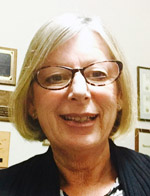By Judy Lash Balint

JERUSALEM — Ben Gurion Airport closed at 1 p.m today and won’t reopen until three hours after the end of Yom Kippur tomorrow night. Public transportation all over Israel grinds to a halt by 2:30 p.m.
In the streets later in the day, men hurry along with towels to the nearest mikveh (ritual bath). Many have already started building their sukkot (booths) in readiness for Sukkot, the one-week festival that starts the week after Yom Kippur. Sukkot structures of all kinds have sprung up on balconies, street corners and in front of cafes. The final decorations and the schach covering will be added right after the conclusion of Yom Kippur.
In several Israeli towns, police cars pull over random motorists, stroll up to the car window and extend a hand filled with apples and honey to the stunned drivers sending them on their way with a “Shana tova,” greeting.
Over the past few days, the streets in and around the Old City, Nachlaot, the Bukharan Quarter and Meah Shearim have been completely packed with people hurrying to and from the pre-Yom Kippur selichot prayers. Curious secular Israelis by the hundreds take part in pre-dawn Selichot tours, where they look in on dozens of congregations where the faithful are immersed in penitential prayers chanted to ancient melodies.
A selichot concert Monday night put on by the Jerusalem Municipality at Kikar Safra was standing room only as thousands took part.
The busiest kiosks on the streets are those selling shoes made from fabric or plastic–to comply with the prohibition against wearing leather on Yom Kippur.
Strains of chazanut waft out of many windows, as many radio and TV stations broadcast operatic renditions of the well-known Yom Kippur prayers in a variety of styles. Almost every radio and TV channel also features a physician prescribing pre-fast measures to stave off headaches and ensure an easy fast, and advice on the best type of food with which to break the fast.
Many of the rabbis providing commentary on Yom Kippur in the Israeli media emphasize the festive nature of the day–not only the obvious solemnity. Be happy, we’re told, that God grants us this grand opportunity to get a new lease on life–the possibility of teshuva (return) shows that Judaism is optimistic and forward-looking and allows for the reformulation of both our interpersonal relationships and our relationship with God. Singing and dancing are the de rigeur ways in which many congregations here, especially those at yeshivot, end the Yom Kippur day expressing joy at the soul having been uplifted.
While polls indicate that around 60 percent of Israeli Jews between 18-35 will fast, non-observant Israelis are also getting ready for Yom Kippur.
For the past 12 years, a group of progressive Orthodox rabbis under the Tzohar banner have been hosting open Yom Kippur tefillot for communities all around Israel. Over 50,000 people attended last year and more are expected this year.
Tzohar has out together a special machzor and detailed handout explaining the rituals, the meaning of the prayers that take place during the reverent day to ensure it is a meaningful and encompassing experience for all.
The daily Yisrael Hayom newspaper included the handout in its holiday edition. Radio ads inviting people to community centers for Yom Kippur tefillot note that “no one group owns Yom Kippur–it belongs to all of us.”
There’s no traffic apart from emergency vehicles on the streets of Israel on Yom Kippur, so it’s become a traditional time for mass outings on bikes–new and old. Kids and adults enjoy the one-time freedom of movement for two-wheeled transportation.
There’s also the obligatory rehash of stories from the 1973 Yom Kippur War in the press. Every year, commentators review the intelligence failures and questionable political decisions that brought Israel to the brink.
As the siren sounds marking the start of the Day of Reckoning and news reports are quieted for at least 25 hours, you may be sure that our prayers will include a plea for a better year than the one before. Beyond that, who knows?
*
Judy Lash Balint regularly blogs on Jerusalem Diaries:In Tense Times.